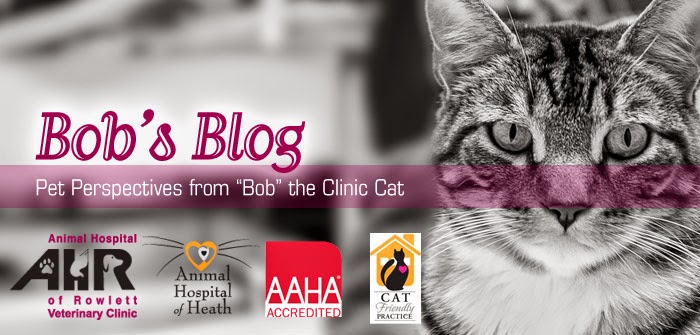Among cat owners, 44.9 percent did not take their cat or cats to a veterinarian during 2011, up from 36.3 percent in 2006. People don't take their cat to the vet because it is stressful to their cat - therefore making it stressful for the client!
One of the ways you can begin to ensure your cat has a fear free visit is to get them used to their carriers. That means, don't get the big scary box that only transports them to the big scary vet the day of the visit! Cats should be trained to love their crates and find them a safe, happy place to sit. Leave the carrier out all the time - or at least several days/weeks prior to the visit. Put their bed in it. Give them yummy food and treats in it. Cats love boxes...make them love their crate!
One of our awesome kitty clients, the Thomas family, leave their crates out before visits and look how relaxed their cats are! They didn't drag them from under a bed and shove them into the carrier and toss the carrier in the hot car and bring them to the scary vet. They slept in their crates willingly because it is a safe place to them.
Another important part of the kitty transport is getting them into the car. You should let the car cool off (or heat up in winter) to ensure they are comfortable. They should be covered with a towel so they don't see anything scary. The car should have on soft music (it shouldn't sound like a concert hall) and the windows should be up.
They should be placed in an area where their crate remains still and doesn't slide all over the trunk or back seat. They should be carried into the clinic in their crate with a towel covering them like this (like a heavy box that is steady):
They should not be carried like this (swinging from side to side):
Please help your cat to have a better visit by ensuring the process to get them TO the vet is stress free! The more your cat likes getting here, the better we can make their visit! To read more about getting your cat to the vet click the links below:
http://catfriendly.com/be-a-cat-friendly-caregiver/getting-cat-veterinarian/
http://www.catalystcouncil.org/
http://catfriendly.com/keep-your-cat-healthy/cat-friendly-practice/can-benefit-visiting-cfp/



